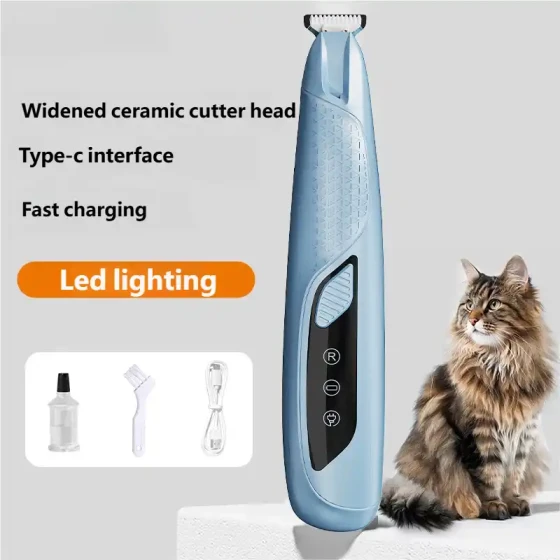Doctor advises male cats do not need to wear a collar after neutering (Can male cats not wear a collar after neutering)
Can male cats not wear a collar after neutering
One week. Male cats can remove the Elizabethan collar one week after neutering. By this time, the cat's wound has basically healed, and there is no need to worry about the cat licking the wound causing inflammation.
Newly neutered cats must wear an Elizabethan collar to prevent them from licking the wound and causing it to reopen. The cat's Elizabethan collar is usually made of soft plastic with a velvet edge, which reduces irritation.
Because cats are very agile, even when wearing a collar, owners should always pay attention to prevent the cat from taking off the collar.
If the cat's wound shows signs of bleeding or redness and swelling, go to the hospital immediately to treat the wound.
Precautions for male cat neutering: After the neutering surgery, the cat definitely has a wound that often does not require bandaging. Therefore, after the cat wakes up, do not allow it to lick the wound directly, as cat saliva contains certain bacteria.
If the cat repeatedly licks its wound, infections are easily caused. When the weather is good and the sun is warm, you can take the cat outside to get some sun, which helps the wound heal.

Can male cats not wear a collar after neutering
Male cats aged 10 can be neutered.
No matter the age, as long as a physical exam is done and careful preparation is made, and the cat's health condition allows, neutering is possible.
According to professional neutering surgery, before surgery, the doctor will perform basic checks (temperature, heart rate, and blood pressure) and blood tests for adult cats to ensure the liver and kidneys are healthy and can handle the anesthesia used in neutering.
Some veterinarians also check the cat's blood clotting ability by blood tests and can test thyroid function for older adult cats (over five years old according to veterinarians).
For male cats, the neutering procedure is much simpler, but if necessary, an intravenous catheter can be requested.
During surgery, the cat will also be connected to monitoring devices to track heart rate, breathing, blood pressure, etc.
Because of such professional pre- and intra-operative arrangements, no matter the cat's age, as long as it passes the physical exam, neutering surgery can be performed.
Think carefully, doctors can help 90-year-old elderly people remove kidneys with robotic assistance. As long as medical technology keeps up, there is actually no age limit for neutering cats, which is normal.
Male cats unwilling to wear a collar after neutering
When posting about the male cat neutering surgery on social media, you can express it subtly, such as: "My baby has grown up, my boy has grown up, but I only want my baby to belong to me alone, only to my family. So, my baby and I have gone through a transformation of life together. From now on, my baby boy will become a quieter male, but when the dream ends, will he hate me?"
Can male cats not wear a collar after neutering
Cats that keep meowing after neutering may have the following reasons: after the anesthesia wears off, the cat feels pain and keeps crying, which can be relieved by painkillers; the hormone levels in the cat change after neutering, causing restlessness and anxiety, but this will disappear after a while and does not require too much worry.
After neutering, cats may have the following changes: they may meow or not go into heat anymore and will not spray urine to mark territory. Due to lower hormone levels, especially reduced thyroid hormones, cats’ metabolism decreases, and if they do not exercise enough, they may gain weight. Hormonal changes also lower cats’ activity enthusiasm, making them more settled and less willing to move.
Do male cats need to wear a collar after neutering
It's best to remove the Elizabethan collar about 10 days after neutering. The collar mainly prevents the male cat from licking the wound, which may cause infection and hinder wound healing.
However, every cat’s situation is different, and their physical conditions also vary. Some cats recover longer while others are faster, so the timing to remove the collar is flexible.
Male cat neutering is a relatively minor surgery, and recovery is usually faster than for female cats. Once the scab forms and falls off, owners can remove the collar.
How long after neutering can a male cat stop wearing the collar
Generally, it is 3-8 days, and if the cat is healthy, it might be 1-2 days. During this period, diligent care for the cat is needed. Neutering fees and pre/post care: 1. The surgery price for male cats should be about 80-120 yuan (varies with anesthesia type).
2. Depending on individual circumstances, wounds heal in about 1-2 weeks. During this time, avoid the cat licking the wound. It is best to wear an Elizabethan collar.
3. Cool weather is more beneficial for wound healing and reduces infection risk. The precautions for dog neutering are similar. Pay special attention to ensure the cat is not in heat and is very healthy! Confirm that hospital measures are appropriate and equipment is thoroughly sterilized. Other notes: 1. On the day of neutering, owners should carry animal eye drops to prevent damage from dry eyes during anesthesia (because anesthetized cats cannot close their eyes; eye drops should be applied every 3-4 minutes).
2. Do not use any awakening injection post-surgery; it harms the cat;
3. Bring a larger crate or carrier so doctors can comfortably place anesthetized cats after surgery;
4. Cats feel weak right after waking, so it's best to place them on padded floors to prevent falls.
How long after male cat neutering can they not wear the collar
Before male cat neutering surgery, fasting and no water is required for 24 hours, then anesthesia is given, and the testicles are removed.
Firstly, the pet hospital will inform owners to fast and withhold water for 24 hours to prevent urinary or fecal incontinence caused by anesthesia, which can be very unpleasant. Suitable anesthetics are injected to ensure the cat cannot resist. The anesthesia degree depends on the cat's resistance. When muscles are powerless, the cat can enter the operating room. During surgery, the doctor removes the two testicles; some cats have cryptorchidism. Sometimes doctors say whether they have removed or not, and owners can remind doctors. After removal, the surgeon shows both testicles to the owner to ensure a complete operation. After surgery, specialized neutering clothes are used to prevent cats from licking wounds when waking up. Cats usually clean themselves and can walk two hours after surgery but should not be overexcited. Owners should take them home for rest. Within 24 hours post-surgery, avoid feeding to prevent urinary tract infections when urinating. Generally, after 15 days, when stitches are removed, cats can play with others again. Actually, cats can still mate after surgery; personality differences are minimal, but there are benefits. Doctors recommend wearing the collar for 12-14 days, but if recovery is good, the collar can be removed earlier.
Are there other ways besides collars after male cat neutering
After neutering, the male cat’s scrotum still has a shell-like thing that props it up, so it feels like the 'bells' haven’t reduced. Over time, this thing shrinks naturally, and the scrotum will reduce. Neutering cats fundamentally solves the risk of reproductive diseases, especially in male cats, and extends lifespan. Studies show neutered male cats also become gentler. My friend's male cat's personality changed after neutering and became more clingy.
Can male cats not wear collars after neutering
Male cats need to wear a neck collar for 7 days after neutering because the wound takes about 7 days to heal completely. The collar’s function is to prevent the cat from licking the wound and causing infection, which would worsen recovery. Owners should not avoid the collar out of concern for the cat’s discomfort. Only after complete healing can the collar be removed.
If a male cat refuses to wear the collar, owners can try different types of collars, choosing the most comfortable one. Cats generally resist wearing collars, but the collar must be worn to prevent licking the wound and causing continual non-healing.
What to do if male cats don’t wear collars after neutering
If a male cat refuses to wear an Elizabethan collar, owners can dress the cat in surgical clothes or bandage the wounds to effectively prevent wound infection.
Male cats are most likely to lick or bite the wound on the first day after neutering. If the cat is agitated by the collar, it can be removed temporarily while the owner holds it or manually supervises it, which helps wound recovery. Stray cats cannot wear these Elizabethan collars; using absorbable stitches or surgical clothes can effectively solve wound infection problems.
Can cats not wear collars after neutering
The answer is it is recommended not to use cat litter temporarily. Although the male cat’s neutering wound is small, contact with cat litter may still cause wound infection. If the wound has healed well, it is recommended to use cat litter again after 1-2 days. This is best for the cat's wound, avoiding infection and preventing litter from sticking to the wound.





